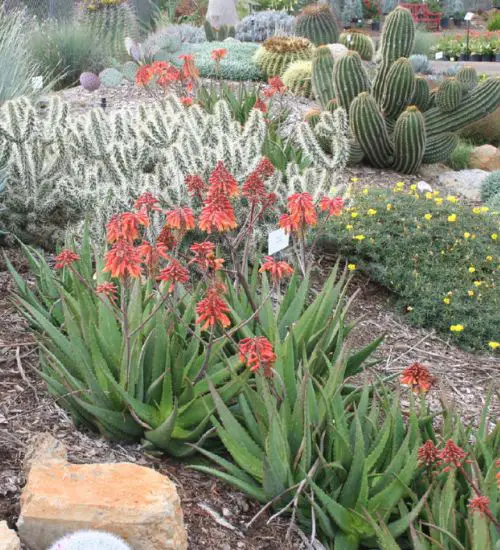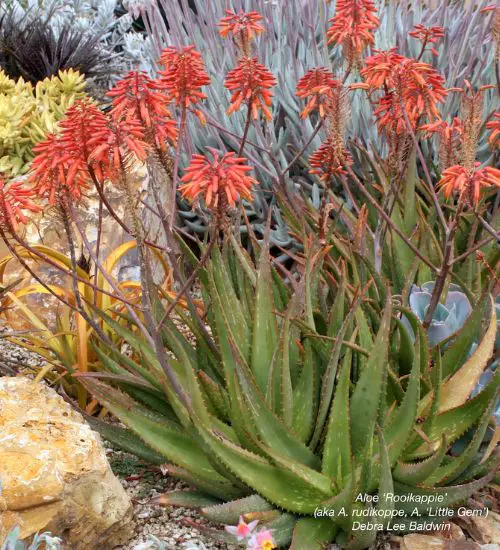Sun: full sun
Water: Below average watering needs for a succulent
Temperature: Zone 9b from 25° F to 30° F (-3.9° C to -1.1° C) to Zone 11b from 45° F to 50° F (7.2° C to 10° C)
Winter Survival: Not cold hardy
Propagation: offsets, seeds
Flower: In the Spring, in the Winter.
Flower Type: Yellow, Orange
Toxic: Can be toxic to humans and animals
Dormant: winter
Space Requirement:
Common Problems: No major pests, Plants may rot if overwatered
Basc Care for Aloe ‘Rooikappie’
Watering
Can you water your succulent more than what its need? The answer is yes and no. In extreme conditions, you can water your plants more often when you notice the soil is completely dry.
One simple tip for you is that you can use some online apps to check the soil status before you go water your succulents. I would recommend the ThePlantsCheck app, it has some nice features there.
Fertilizing
Only feed this succulent during its active growing seasons which means Unknown - Tell us. Use the right fertilizer applied in the right amounts. Applying half-strength balanced fertilizer every month or so is recommended for optimal results.
Do not fertilize during winter as the plant is dormant.
Sun & Location Requirements for "Little Gem', A. rudikoppe"
Aloe ‘Rooikappie’ requires full sun in order to thrive. When choosing a spot for your succulent, make sure it gets at least 6 hours of direct sunlight per day. If the leaves start to look pale or weak, this could be an indication that the succulent isn't getting enough light.
As per this succulent profile, it is only able to stay healthy when the environment temperature is above the range of zone 9b from 25° F to 30° F (-3.9° C to -1.1° C).
When temperatures drop below freezing, it is important to take precautions to protect Aloe ‘Rooikappie’ from the cold. Insulating and providing adequate drainage for the plant are key elements in helping it survive winter weather. Wind and sun exposure should also be minimized to prevent frost damage.
Aloe ‘Rooikappie’ also benefits from some indirect light throughout the day as well, so make sure you give it enough space to soak up light without becoming too exposed to heat.
Propagation
Offsets are an easy and reliable way to propagate succulents, like Aloe ‘Rooikappie’. With just a few simple steps, you can get a brand-new plant from an existing one.
Aloe ‘Rooikappie’ can be propagated from seeds. Signs of a good seed is one that is plump, dark in color and slightly sticky. To propagate X from seed, one must prepare a soil mixture of well-draining potting mix, sow the seeds evenly and lightly press them into the surface. Lastly, gently water the soil using a spray bottle and place the container in bright but indirect light.
Toxicity

Aloe ‘Rooikappie’ can be toxic when ingested. All parts of the plant, such as stems, leaves and flowers, are potentially dangerous and can cause severe reactions in humans and animals when consumed. It is important to stay aware of potential dangers and avoid contact with the succulent if possible.
Pests and Diseases
Aloe ‘Rooikappie’ is not affected too much by common pests and diseases like most of the other succulents.


